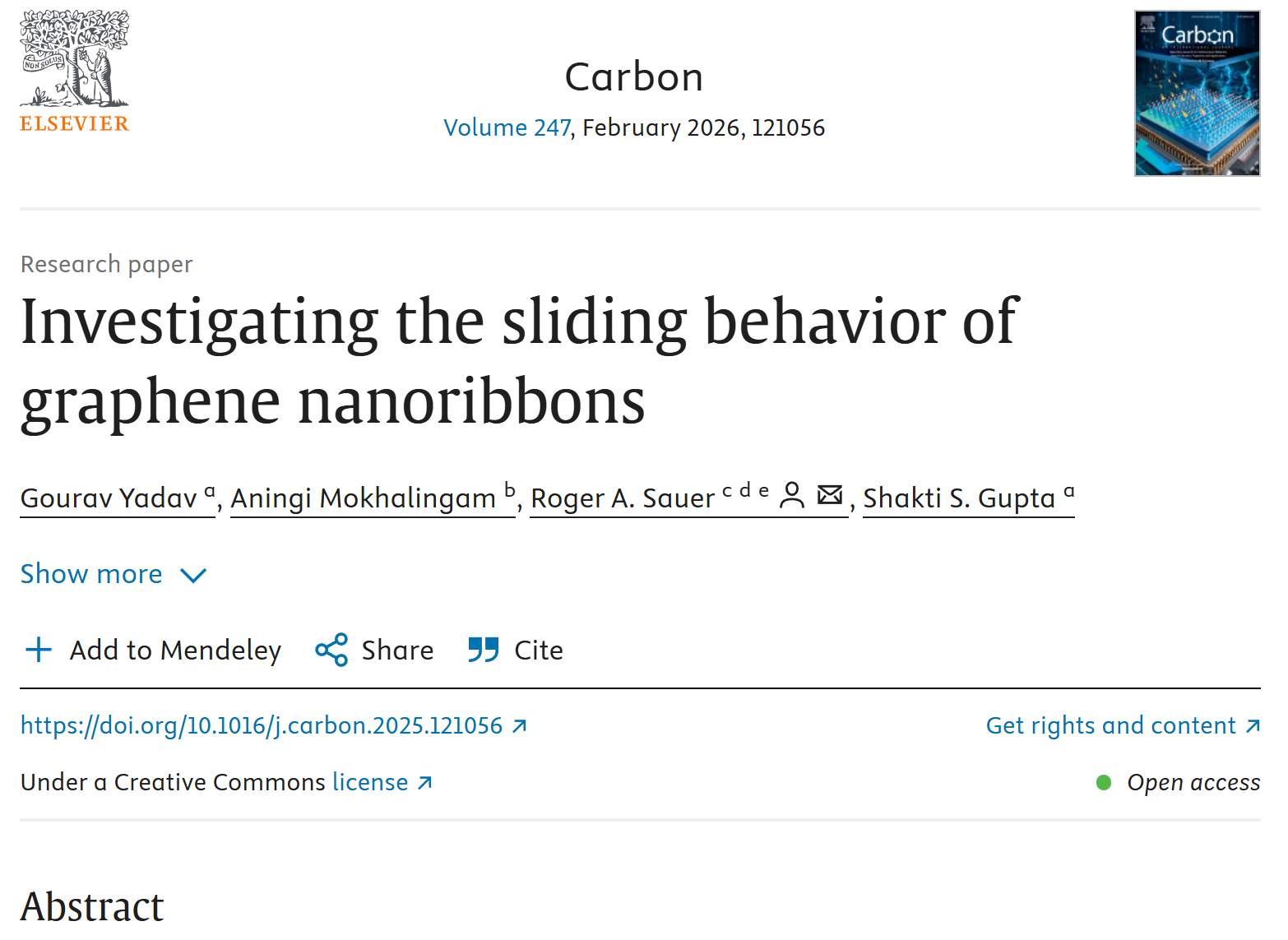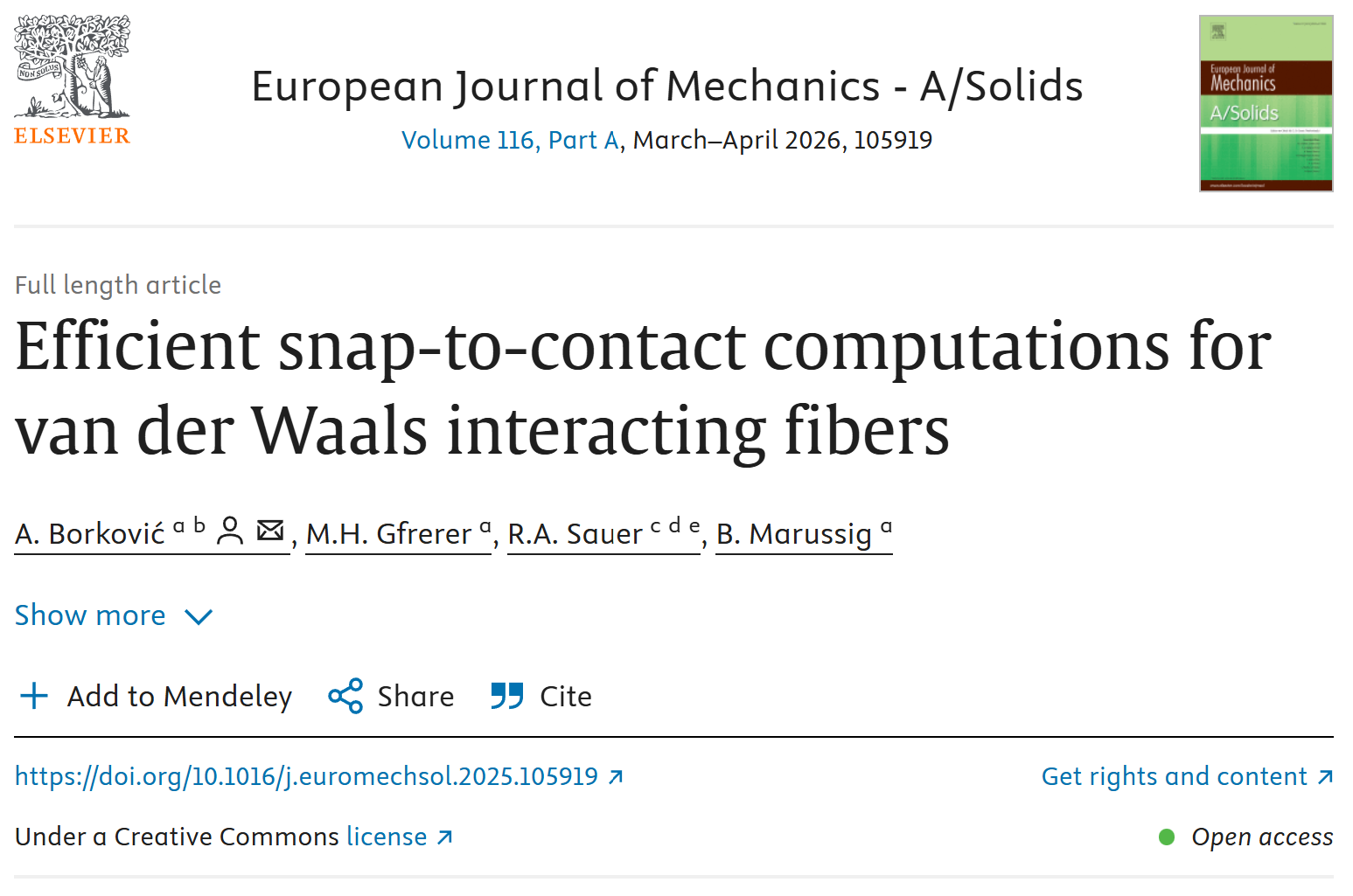
The article "Investigating the sliding behavior of graphene nanoribbons", written by Gourav Yadav, Aningi Mokhalingam, Roger A. Sauer, and Shakti S. Gupta, has been published as open access in "Carbon" by Elsevier.
Abstract:
This work presents a Euler–Bernoulli beam finite element (FE) model to study the interlayer interaction mechanics of graphene nanoribbon (GNR) over a graphene substrate. The FE model is calibrated using molecular dynamics (MD) simulations employing the potential of Kolmogorov and Crespi (2005). This study focuses mainly on the effect of boundary conditions on the sliding behavior, and on the strain transfer between layers when the substrate is subjected to uniform biaxial deformations. The interlayer sliding behavior is found to depend on the presence of critical parameters, namely, the length of the GNR and the applied strain to the substrate. The FE results indicate that the applied strain transferred from the substrate to the GNR varies linearly up to a critical value ∈c beyond which it decreases suddenly. Further, ∈c is found to appear beyond a critical GNR length, Le ≈ 14 nm. Furthermore, a length parameter Ld ≈ 10 nm is computed, beyond which the sliding of GNR is dissipative. Through FE simulations, it is also found that for a GNR length ≥ 17 nm, the edge pulling force saturates. Our results also highlight the importance of the inertia of GNR on its sliding for different boundary conditions. It is also concluded that the maximum strain that can be transferred to GNR lies between 0.59% and 1.15%. The results of the FE approach align with MD simulations within an error of approximately 10% that can be attributed to the choice of material parameters and the simulation setup.
https://doi.org/10.1016/j.carbon.2025.121056

Rodolfo Javier Williams Moises presented his doctoral theses with the title "Computational Modeling
more...
The open access article "Efficient snap-to-contact computations for van der Waals interacting fibers
more...